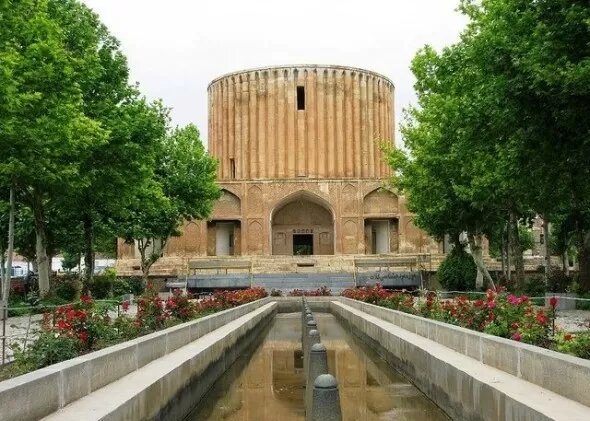INSUBCONTINENT EXCLUSIVE:
TEHRAN - Nestled in the breathtaking landscapes of Kalat county in Khorasan Razavi province, northeast Iran, Qasr-e Khorshid, also known as
the Sun Palace, invites travelers to explore a fascinating blend of history, art, and architecture.This awe-inspiring 18th-century monument,
stretched from northern India to the Caucasus Mountains
Qasr-e Khorshid, with its 20-meter-high fluted cylindrical tower and octagonal platform, serves as a lasting testament to his ambition and
vision.The Sun Palace is a harmonious fusion of Iranian and Indian architectural styles, showcasing intricate designs and exquisite
Step inside to marvel at the ornate stucco work, gilded decorations, and paintings that once graced the living quarters of the royal
family.The first two levels of the palace combine Persian and Indian influences, while the cylindrical tower on the roof once housed Nader
A garden setting resembles that tradition of Persian gardens with fountains, pools, and streams that enhance its serene ambiance.Today,
Qasr-e Khorshid has been transformed into an anthropology museum, allowing visitors to delve into the rich history of the region
picturesque setting, the Sun Palace promises an unforgettable experience.Napoleon of Persia!Born Nader Qoli Beg, Nader created an Iranian
empire that stretched from the Indus River to the Caucasus Mountains
He is widely considered one of the most powerful rulers in the history of the nation
He assumed power when a period of chaos overwhelmed Iran.Nader endeavored to reunite the Persian realm while repelling invaders
He is sometimes referred to as the Napoleon of Persia or the Second Alexander.According to Encyclopedia Britannica, Nader Qoli Beg had an
obscure beginning in the Turkish Afshar tribe, which was loyal to the Safavid shahs of Iran
After serving under a local chieftain, Nader formed and led a band of robbers, showing marked powers of leadership.With the navy he
proceeded to build, Nader Shah was able not only to take Bahrain from the Arabs but also to invade and conquer Oman
In February 1739, after capturing several cities of the Mughal Empire of northern India, he moved against the main Mughal armies at Karnal,
He won the battle and entered Delhi, returning to Iran with vast amounts of loot, including the fabulous Peacock Throne and the Koh-e-Noor
He then attacked the Uzbeks around the cities of Bukhara and Khiva; his empire had reached its furthest expansion and rivaled the
territorial extent of the ancient Iranian empire.AM

